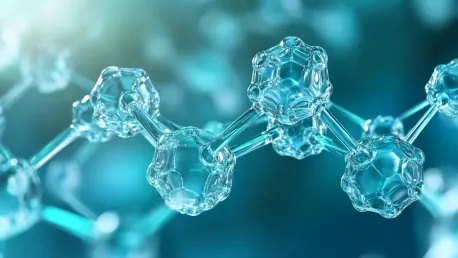Groundbreaking research conducted by a collaborative team from Mount Sinai and Memorial Sloan Kettering Cancer Center has unveiled a novel mechanism by which monoamine neurotransmitters, specifically serotonin, dopamine, and histamine, regulate brain physiology and behavior. This research highlights how these neurotransmitters bond chemically to histone proteins, the core DNA-packaging proteins in cells, to control circadian gene expression and behavioral rhythms.
The Role of Monoamine Neurotransmitters
Traditional Understanding of Neurotransmitters
Monoamine neurotransmitters have long been recognized for their role in transmitting signals between nerve cells, thereby influencing vital bodily functions. These neurotransmitters, including serotonin, dopamine, and histamine, are crucial for various physiological processes such as mood regulation, sleep, and cognition. They act as chemical messengers, helping to relay information through the nervous system and ensuring that bodily and mental processes are synchronized.
Over the years, extensive research has highlighted the importance of monoamines in maintaining mental health and functional equilibrium. Serotonin, for instance, has been closely associated with mood regulation, playing a significant role in conditions like depression and anxiety. Dopamine is integral to reward and pleasure mechanisms, while histamine is essential for immune responses and vigilance. Despite these well-documented roles, recent studies suggest that these neurotransmitters might have more profound influences on brain function and behavior than previously thought.
New Dimension of Neurotransmitter Function
However, this research brings to light an additional dimension of their function: their ability to directly attach to histone proteins and modulate gene expression programs in the brain. This discovery could pave the way for developing therapies targeting conditions related to circadian rhythm disruptions, such as insomnia, depression, bipolar disorder, and neurodegenerative diseases. Through this newly identified mechanism, monoamine neurotransmitters can influence the expression of genes, thus affecting the overall functioning of the brain.
This novel insight reveals that beyond their classical role as chemical messengers, these monoamines can chemically modify histone proteins. This modification process, by binding to histones, allows neurotransmitters to regulate gene expression subtly and dynamically. Such a multifaceted interaction illustrates the complexity of molecular mechanisms that underpin behavior and physiological rhythms. This discovery could be a key to understanding how disruptions in these mechanisms might lead to various mental health issues.
Mechanism of Histone Modification
Monoamines and Histone Proteins
The study, published in the journal Nature, depicts a novel regulatory mechanism where the brain’s internal clock is influenced in a unique way by monoamine neurotransmitters. These monoamines can directly modify histones, which in turn influence brain circadian gene expression patterns, neural plasticity, and the sleep-wake cycle. This remarkable interaction showcases how neurotransmitters can affect gene expression through epigenetic modifications, leading to far-reaching effects on brain function.
Such an intimate interaction between monoamines and histone proteins informs us about the critical roles these neurotransmitters play in maintaining the brain’s rhythmic activities. Modifying histone proteins provides a means for the brain to adapt to environmental cues rapidly. For instance, modifying circadian gene expression can affect the sleep-wake cycle, which is crucial for overall health. Disruption of these rhythms has been linked to various disorders, emphasizing the importance of this novel regulatory mechanism in maintaining mental well-being.
Interaction Between Neurotransmitters and DNA Structure
This finding underscores a significant interaction between neurotransmitter signaling and DNA structure alteration, showcasing how circadian events and neurotransmitter stimulation can dynamically affect neuronal functions. The significance of this discovery is further heightened by past work from the Maze Laboratory, which found that serotonin and dopamine not only act as neurotransmitters but can also attach to specific histone proteins (###). This suggests a deeper level of interplay between biochemical signals and genetic material.
This biochemical interplay could open new avenues for understanding how environmental factors influence brain function and behavior. By chemically modifying histones, monoamines can effectively turn genes on or off, thereby regulating various biological processes. This dynamic and reversible process allows the brain to swiftly adapt to changes, highlighting the flexibility of these regulatory mechanisms. Insights gained from this research could lead to developing innovative treatments for disorders affected by these epigenetic modifications.
Enzyme Transglutaminase 2 (TG2)
Role of TG2 in Histone Modification
Moreover, the enzyme transglutaminase 2 (TG2) was identified as responsible for modifying histones with serotonin and dopamine. In the latest study, interdisciplinary efforts were employed to decode the biochemical mechanisms of TG2. The researchers discovered that TG2 regulates intracellular monoamine neurotransmitters by adding, erasing, or exchanging one monoamine neurotransmitter for another on histone ###. This regulation at the molecular level allows for fine-tuning of gene expression based on the brain’s needs.
The ability of TG2 to modify histones with different monoamines underscores the enzyme’s versatility and importance in controlling gene expression programs crucial for brain function. By either adding or removing specific neurotransmitters on histones, TG2 can essentially dictate which genes are expressed or silenced, thus orchestrating complex biological processes. Understanding this regulatory system could lead to targeted treatments addressing specific neurotransmitter imbalances linked to psychiatric and neurological conditions.
Impact on Gene Expression
These varying monoamines consequently control gene expression patterns through independent mechanisms. This dynamic regulation of histone modifications suggests an additional layer of complexity in how monoamines influence gene expression and, subsequently, brain physiology and behavior. For instance, different types of monoamines might affect gene expression in unique ways, leading to diverse outcomes in terms of brain function and behavior.
This added complexity provides a more detailed understanding of the molecular mechanisms governing brain activity. It highlights how monoamines, beyond mere chemical messengers, can have lasting effects at the genetic level. This understanding is crucial for developing new strategies to manage brain disorders, potentially allowing for more precise and effective therapeutic interventions. It also emphasizes the need for further research to unravel the specific pathways through which these modifications occur.
Regional Brain Differences
Heterogeneous Pools of Monoamines
For instance, it was observed that different brain regions, characterized by heterogeneous pools of monoamines, might rapidly exchange these monoamines on histones in response to external stimuli, thus directly regulating gene expression programs. This regional specificity adds another layer of complexity to the understanding of brain function and behavior. Different areas of the brain, having distinct pools of neurotransmitters, might respond uniquely to the same stimulus, leading to varied behavioral and physiological outcomes.
This differentiation could be crucial for fine-tuning responses to the environment, allowing the brain to display a high degree of plasticity and adaptability. Such specificity could also explain why some regions of the brain are more susceptible to certain disorders, dependent on the unique monoamine pools and their dynamic modifications of histones. Recognizing these regional differences is essential for developing targeted treatments that address the specific needs of different brain areas.
Histaminylation and Circadian Rhythms
One novel finding of the study was the identification of histaminylation—TG2’s reaction with histamine—as a new histone modification, alongside ### serotonylation. These modifications were shown to play a critical role in the regulation of circadian rhythms in the mouse brain, as well as circadian behavior. The discovery of histaminylation adds another layer to our understanding of how neurotransmitters can influence gene expression and behavior through chemical modifications of histones.
Histaminylation, with its significant impact on circadian rhythms, provides a molecular link between neurotransmitter signaling and the regulation of daily physiological cycles. This understanding opens up new possibilities for addressing circadian rhythm disorders and related health issues. Interventions targeting histaminylation could lead to novel treatments that correct aberrant circadian patterns, potentially benefiting those with sleep disorders, depression, and other related conditions.
Broader Implications
Beyond Neurotransmission
This mechanism offers insights into a neurotransmission-independent process by which the brain could control sleep-wake cycles, which are often disrupted in various disorders. The research points towards the broader implications of TG2-dependent monoaminylation of histones in regulating other significant biological processes and disease states, including immune system regulation and cancer. These findings demonstrate the multifaceted roles of monoamines in maintaining homeostasis and overall health.
Understanding how TG2 and histone modifications regulate such processes can provide a clearer picture of how disruptions lead to disease. By identifying the molecular pathways involved, researchers can develop new therapeutic strategies targeting these specific mechanisms. Such targeted approaches could potentially lead to more effective treatments with fewer side effects, advancing our ability to manage complex diseases linked to monoamine dysregulation.
Potential Therapeutic Interventions
This insight opens up new avenues for exploring TG2 regulatory mechanisms and how they can provide understanding and potential therapeutic interventions for diseases characterized by monoaminergic dysregulation, such as depression, schizophrenia, and Parkinson’s disease. The ability to manipulate these regulatory pathways could lead to breakthroughs in treating conditions that have been challenging to manage with existing therapies.
Future research could focus on developing drugs or therapeutic techniques that specifically target these histone modifications. By doing so, it may be possible to restore normal gene expression patterns and alleviate symptoms of various neurological and psychological disorders. Such advancements would mark significant progress in our ability to treat brain disorders, enhancing patient outcomes and quality of life.
Future Research Directions
Advanced Human Research
The study’s findings represent a foundational step towards a more nuanced comprehension of the interplay between neurotransmitters, gene expression, and brain function. This could lead to advanced research in humans and potentially novel therapeutic strategies addressing a variety of neurological and psychological disorders. Translating these findings from animal models to humans will be a crucial step in this process, potentially leading to groundbreaking treatments and interventions.
Continued research in this area could reveal new molecular targets for drug development, providing a more comprehensive understanding of how monoamines regulate brain function. This deeper insight could revolutionize the treatment of mental health conditions, allowing for more personalized and effective care. By building on these initial findings, scientists can develop innovative approaches to manage and treat disorders that have long been difficult to address.
Therapeutic Advancements
A collaborative team from Mount Sinai and Memorial Sloan Kettering Cancer Center has made groundbreaking strides in understanding how monoamine neurotransmitters—specifically serotonin, dopamine, and histamine—regulate brain physiology and behavior. This pioneering research has unveiled a novel mechanism demonstrating that these neurotransmitters bind chemically to histone proteins, which are the core DNA-packaging proteins within cells. By chemically bonding to these histone proteins, serotonin, dopamine, and histamine are able to control the expression of genes tied to the circadian rhythms that govern our behavioral patterns. The findings provide a deeper understanding of how these neurotransmitters influence both our biological clocks and our actions, opening up new paths for potential treatments for disorders related to circadian rhythms and behavioral health. This research significantly enhances our knowledge of the intricate ways brain chemistry affects both gene expression and behavior, impacting our overall neurological and psychological health in profound ways.









